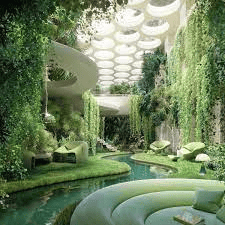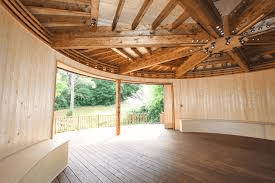Oliver Heath, a biophilic designer and expert in educational architecture, recently published an article that highlighted three examples of the ways nature can inspire and shape architectural design.
Biophilic design
The term biophilic design means more than a buzzword. This is a common sense, yet pioneering movement in architecture that aims to reconnect people with the natural world. The built environment is infused with natural forms and nature in all possible ways. Statistics show that increased exposure to sunlight and plants in classrooms improves attendance, test scores, and learning speed. We need nature to flourish.

If your school has fantastic eco credentials or specially designed biophilic spaces then you will want to advertise and market these attractive features. Be sure to include lots of information on your website. When you need help with Websites for schools, visit a site like https://www.fsedesign.co.uk/websites-for-schools/
Let’s look at some real-world examples of education facilities that welcome this concept:
Paul Chevalier School
The natural elements are incorporated into this school’s design in Lyon, France. The architects behind this peaceful space, like many other designers of custom-made education buildings, have used natural materials whenever possible. Inside and outside, exposed wooden cladding promotes tactile sensory stimulation that both energises as well as relaxes the students.
The school is built around a central, green area. The school has floor-to-ceiling windows that let in plenty of natural light. There are also views to a wooded area and a vegetable patch. Green roofs bring nature even closer to the human environment.
Benenden School
This Kent school has an eco-classroom. The eco-classroom is built from sustainably harvested wood and resembles a treehouse. The children can learn while immersed in nature. Natural textures are enhanced in the classroom by the sedum roof, which is insulating and the views of the Victorian water gardens.

Nanyang Technological University School of Art, Design and Media
This building is a truly remarkable and groundbreaking feat of architecture. Its aim is to bridge nature and the built form. The building, which is located in a valley that was intended to be preserved for its green lung potential, has become one of the surroundings. It is probably the largest example of biophilic principles being used. The building incorporates water features, sweeping green roofs and glass edifices that blur the distinction between the classrooms and help disintegrate artificial hierarchy between teachers and their students, nature and building.